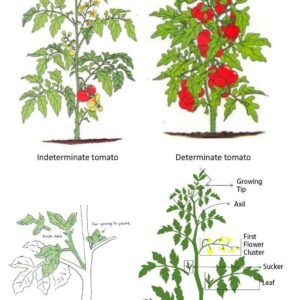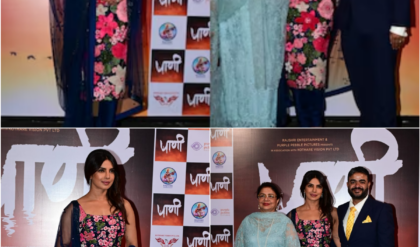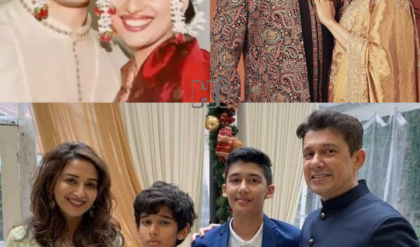The issue of Pakistani artists working in India has been a contentious topic, particularly in the realm of entertainment. As India and Pakistan share a complex history marked by political tensions and cultural exchange, the question of whether Indian authorities should allow Pakistani artists to work in the country stirs debates that encompass national sentiment, artistic freedom, and the cultural landscape of both nations. This dilemma has come to the forefront in various instances, especially following acts of terrorism or heightened political strife, leading to calls for boycotts of Pakistani talent in Indian cinema and music.
In recent years, the Indian entertainment industry has seen several prominent Pakistani artists, including actors, musicians, and directors, making significant contributions to Bollywood and television. Artists like Atif Aslam, Rahat Fateh Ali Khan, and Fawad Khan garnered immense popularity and acclaim in India, bringing their unique styles and cultural nuances to the forefront of Indian entertainment. Their performances often resonated with Indian audiences, transcending borders and fostering a sense of shared cultural appreciation. The success of these artists in India illustrates the potential for art to bridge divides and promote understanding, regardless of the geopolitical context.
However, the geopolitical climate often complicates this narrative. Following incidents of violence attributed to cross-border terrorism, there have been widespread calls from various political groups and public sentiment advocating for the exclusion of Pakistani artists from the Indian entertainment industry. This backlash has been particularly pronounced during times of heightened tensions, leading to a moral dilemma for many in the industry. The question arises: Should artistic merit and individual talent be separated from the political landscape that informs national identities and sentiments?
Supporters of allowing Pakistani artists to work in India argue that art should be above politics. They emphasize the importance of cultural exchange and collaboration in fostering peace and understanding between the two nations. Many believe that artists, regardless of their nationality, contribute to the richness of the cultural tapestry, and denying Pakistani artists the opportunity to work in India undermines the shared heritage and influences that exist between the two countries. Proponents often cite examples from history where art has played a role in healing and bridging divides, suggesting that creative collaboration can lead to a more profound understanding of one another’s cultures.
On the other hand, opponents contend that allowing Pakistani artists to work in India undermines the sacrifices made by security personnel and the pain felt by victims of terrorism. They argue that promoting artists from a nation perceived as hostile may be seen as an affront to national sentiments, especially among those who have experienced loss due to cross-border terrorism. This perspective highlights the complex interplay between patriotism and artistic freedom, raising questions about the extent to which personal beliefs and national pride should influence the entertainment industry.
The dilemma is further complicated by the economic implications of allowing or banning Pakistani artists in India. The Indian entertainment industry is one of the largest in the world, and Pakistani artists have contributed significantly to its success. Their involvement has brought a fresh perspective to Indian cinema and music, enhancing the diversity of artistic expression. Banning these artists may lead to economic losses and a reduction in creative collaboration that benefits both industries. Moreover, many Indian fans appreciate the work of Pakistani artists, suggesting that the consumer base does not necessarily align with political rhetoric.
The reactions to these dilemmas are not uniform across society. The youth, who often engage with digital media, tend to view cultural boundaries differently than previous generations. They are more inclined to celebrate artistic talent irrespective of nationalities. Social media has become a powerful platform for expressing opinions, leading to grassroots movements advocating for the inclusion of Pakistani artists in Indian entertainment. This shift reflects a growing desire among younger audiences for collaboration and cultural exchange, challenging the traditional narratives that dictate public sentiment.
The current landscape also demands an examination of how governments and industry stakeholders approach these dilemmas. There have been instances where artists faced backlash for their nationality, leading to self-censorship or withdrawal from projects. Industry insiders have expressed concern about the impact of political climate on creative expression, arguing for a more nuanced approach to managing cultural relations. The film and music industries are often at the forefront of cultural diplomacy, and a balanced approach could foster better understanding and collaboration, even amidst political tensions.
Moreover, the role of media in shaping public perception cannot be overlooked. The sensationalism often surrounding conflicts between India and Pakistan contributes to a polarized view on Pakistani artists. Media narratives can fuel nationalistic sentiments, reinforcing the idea that artists from the other side of the border should be shunned. It becomes crucial for media outlets to adopt a more responsible approach in their reporting, emphasizing the potential for collaboration and cultural understanding rather than division.
Ultimately, the decision of whether to allow Pakistani artists to work in India lies within a broader context of cultural diplomacy, artistic freedom, and the ever-evolving nature of national identities. It requires a careful balancing act between respecting national sentiments and recognizing the transformative power of art. As history has shown, creative collaboration has the potential to transcend borders, providing a platform for dialogue and understanding between nations.
Moving forward, the Indian entertainment industry has an opportunity to lead by example. By fostering an environment that promotes inclusivity and artistic collaboration, it can serve as a beacon of hope amidst geopolitical tensions. This approach not only benefits the industry economically but also enriches the cultural landscape, allowing for a diversity of voices that can resonate with audiences across borders.
In conclusion, the question of whether India should allow Pakistani artists to work again is a complex one, intertwined with issues of nationalism, artistic freedom, and the potential for cultural exchange. As the world becomes increasingly interconnected, it is essential to recognize the importance of dialogue and collaboration in overcoming divisions. The entertainment industry, with its unique ability to influence public sentiment and foster connections, can play a pivotal role in bridging the gap between nations. By embracing inclusivity and celebrating artistic talent, regardless of nationality, both India and Pakistan can pave the way for a more harmonious and understanding future through the universal language of art.
Watch video:
News
उभरे हुए बगीचे के बिस्तरों के लिए अंतिम गाइड: अपने बागवानी अनुभव को बदलें
एक ऊंचा बगीचा बनाना एक फायदेमंद बागवानी परियोजना है जो भरपूर फसल दे सकती है और आपके बाहरी स्थान को सुंदर बना सकती है। यहां एक विस्तृत गाइड दी गई है कि कैसे एक ऊंचा बगीचा लगाया जाए, जिसमें सर्वोत्तम…
लैम्ब क्वार्टर्स/वाइल्ड पालक: अधिकतम स्वास्थ्य लाभ वाला कम आंका गया सुपरफूड
खाद्य पौधों की भरमार के बीच, लैम्ब्स क्वार्टर, या चेनोपोडियम एल्बम , एक उल्लेखनीय लेकिन कम सराहना प्राप्त सुपरफूड के रूप में उभरता है। वाइल्ड पालक, गूजफुट और फैट हेन सहित कई नामों से जाना जाने वाला यह तथाकथित खरपतवार विभिन्न वातावरणों…
टमाटर की अच्छी पैदावार का रहस्य: उन्हें एक तरफ़ से लगाना
टमाटर को एक तरफ़ से लगाना: यह क्यों काम करता है और इसे कैसे करें टमाटर को उनके किनारे पर लगाना असामान्य लग सकता है, लेकिन यह विधि ठोस बागवानी विज्ञान पर आधारित है और आपके सब्जी के बगीचे को काफी…
कार्डबोर्ड बॉक्स में पौधे क्यों लगाएं और उन्हें कैसे लगाएं
कार्डबोर्ड बॉक्स में पौधे लगाना बागवानी के लिए एक सरल, अभिनव दृष्टिकोण का प्रतिनिधित्व करता है जो सभी स्तरों के बागवानों के बीच लोकप्रिय हो रहा है। यह विधि, जिसे अक्सर बिना खुदाई के प्रभावी समाधान के रूप में प्रचारित…
टमाटर की छंटाई की कला में निपुणता: एक व्यापक मार्गदर्शिका
टमाटर उगाने के लिए सबसे लोकप्रिय और फायदेमंद पौधों में से एक है, लेकिन भरपूर फसल प्राप्त करने के लिए सिर्फ़ रोपण और पानी देने से ज़्यादा की ज़रूरत होती है। टमाटर के पौधों के स्वास्थ्य और उत्पादकता में उचित…
प्राकृतिक उर्वरकों से खीरे की उपज दोगुनी करें: एक माली गाइड
बागवानी के शौकीनों और खीरे के प्रेमियों के लिए, अपने बगीचे से ताज़े, कुरकुरे खीरे की भरपूर फसल लेने जैसा कुछ नहीं है। लेकिन क्या आप जानते हैं कि आप प्राकृतिक उर्वरकों की मदद से अपने खीरे की उपज को…
End of content
No more pages to load











